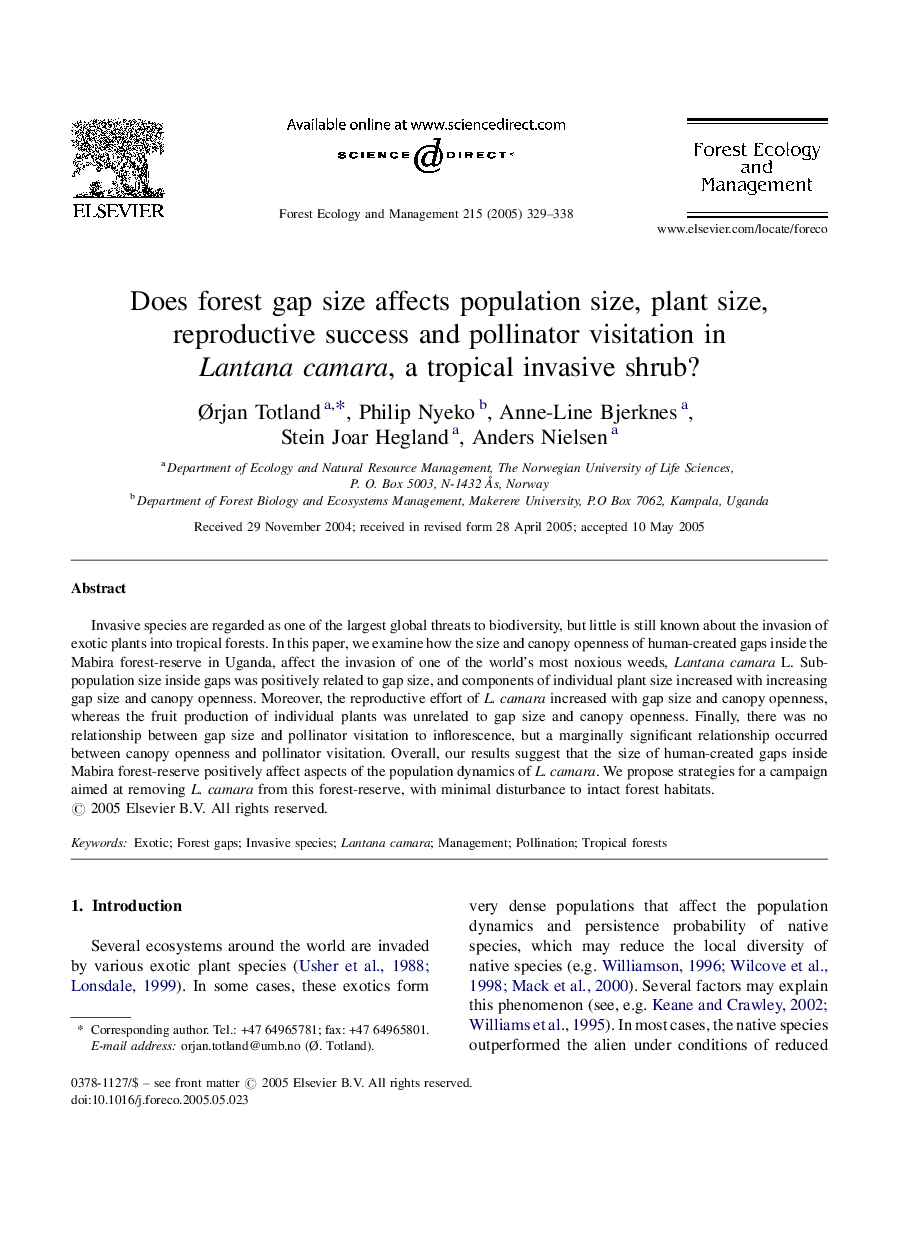| Article ID | Journal | Published Year | Pages | File Type |
|---|---|---|---|---|
| 9620218 | Forest Ecology and Management | 2005 | 10 Pages |
Abstract
Invasive species are regarded as one of the largest global threats to biodiversity, but little is still known about the invasion of exotic plants into tropical forests. In this paper, we examine how the size and canopy openness of human-created gaps inside the Mabira forest-reserve in Uganda, affect the invasion of one of the world's most noxious weeds, Lantana camara L. Sub-population size inside gaps was positively related to gap size, and components of individual plant size increased with increasing gap size and canopy openness. Moreover, the reproductive effort of L. camara increased with gap size and canopy openness, whereas the fruit production of individual plants was unrelated to gap size and canopy openness. Finally, there was no relationship between gap size and pollinator visitation to inflorescence, but a marginally significant relationship occurred between canopy openness and pollinator visitation. Overall, our results suggest that the size of human-created gaps inside Mabira forest-reserve positively affect aspects of the population dynamics of L. camara. We propose strategies for a campaign aimed at removing L. camara from this forest-reserve, with minimal disturbance to intact forest habitats.
Related Topics
Life Sciences
Agricultural and Biological Sciences
Ecology, Evolution, Behavior and Systematics
Authors
Ãrjan Totland, Philip Nyeko, Anne-Line Bjerknes, Stein Joar Hegland, Anders Nielsen,
